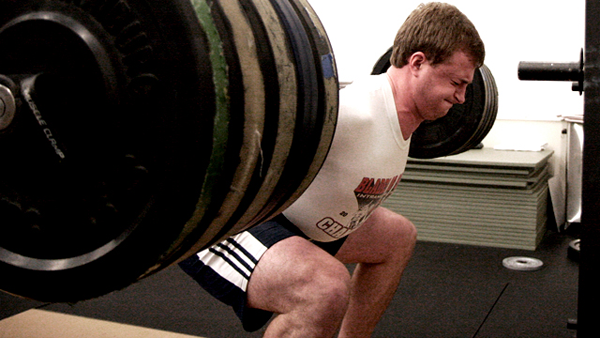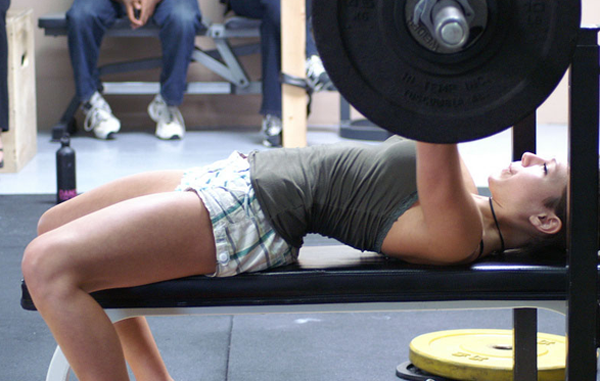If you don’t learn anything else from SteadyStrength, I beg you to remember this. Progressive overload is the most important exercise concept. It applies to all aspects of training including cardio, and weight lifting. Understanding this concept and applying to your training will get you results in the most efficient and safest way possible.
Progressive What??
This isn’t as complicated as the word makes it sound. This is actually a really simple concept to comprehend. The hard part is applying it. So let’s break it down:
Progressive –Something that happens gradually in stages. It proceeds step by step.
Overload –This is when something is holding excessive load, or there is a heavy burden.
As you can see, we can come to the conclusion that this concept basically means to place a heavy burden on something (ourselves), gradually over time.
If you go to the gym everyday and do the same exact thing that you did yesterday, you’re not applying this concept to your workout. That also means that you’re probably not going to see the results that you should.
In order for muscles to grow, they need stressors to adapt to. There are all kinds of ways to put additional stresses on your body. Once your body adjusts to that, then you can add more. A stressor doesn’t only include weight. It’s much more than that. I’ll get to that in a second though.

Where To Begin
Applying this concept doesn’t mean that you have to grab the biggest weight that you see and start throwing it around. Also, in a cardio sense, it doesn’t mean that you have to start off running 3 miles on your first day either.
Progressive overload is actually the opposite of that. In fact, you should be starting from the bare minimums. You need to be able to move your own body weight efficiently, in the proper range of motions. Then we can work our way up from there.
To progressively overload your muscles, there are various stressors that you can adjust to make your workouts tougher. These stressors will dictate how your muscles adapt. The results can include hypertrophy, strength, power, and endurance.
To keep the progression of your workout organized you may need to write stuff down. A journal to keep track of your exercises, weights, rest time, etc. might not be a bad idea. Especially if your just starting out, it might be hard to remember where you’re at with all your workouts.
Now lets get into the various types of stressors that you can use to progressively overload yourself:

Distance
I’m starting off with distance because it’s your first priority as far as progression goes. In a weight training atmosphere, distance refers to range of motion. You need to start with your body weight.
Can you lower yourself into a full squat with proper technique? If not then you probably need to start with partial range lifts. The first stressor that you should ever think about placing on yourself is increasing the range of motion in which your body can function.
For example, if you can’t squat all the way down, then go as far as you can with good form. Set up a platform, like a chair or bench, that you can lower yourself onto (these are called box squats). The next week try to go a few inches lower. Keep going until you can go all the way down past parallel.
The same concept goes for all your exercises. Moving your own body weight for the entire distance of a lift is the number one priority before you every touch a single weight.
From a cardio stand point this one is pretty self explanatory. You need to start off taking baby steps. Then gradually increase the distance. If you have been sedentary for a while, start off by going for a short walk. The next day increase the distance. Keep doing that until you feel ready to meet the next stressor head on.
Efficiency
This stressor goes almost hand in hand with distance. Efficiency has everything to do with technique. Using this stressor involves pushing your body to improve the technique of a movement so that it becomes second nature.
This could involve sitting your hips back farther on the squat, or keeping your chest up at the bottom of a squat.
Even when you start to use weight, you can still use this as a stressor. For example, instead of adding weight to a certain lift, use the same weight and push yourself harder to be more efficient. You will know when your efficiency is improving because the lift will become more effortless.
As far as cardio goes, this means running or swimming with better technique. Do you land on your heels and stomp the pavement with every step? Try running more on the balls of your feet.
When you swim do you use your legs at all, or do they just drag behind you? Concentrate on kicking your legs more to take some work off of your arms. (The next overload principle for cardio is SPEED)
Volume
Volume refers to the number of total reps that you do in a workout. You can increase this number two different ways.
You can either increase the number of sets or reps. You can even do a combination of both.
Intensity
This basically dictates how hard you’re working on every repetition of a lift. To increase intensity you have to add weight. Before you do this, make sure that you have good distance and efficiency. Adding weight is not the first priority by any means.
If your technique or range of motion starts to suffer after increasing the intensity, you need to take some weight off.

Density
You can overload with density by decreasing the amount of rest in between sets of work. This is a great way to build up stamina and endurance. There are two ways to do this. Either do more work in a set amount of time, or do the same amount of work in less time.
You can time your workouts to see how fast you get done. Then the next time you do the same workout, try to get it done faster.
You can also just keep track of rest time. Start off by giving yourself a minute to recover in between sets. Gradually reduce it to 30 seconds.
Speed
This one is pretty self explanatory. You can overload your muscles by doing a lift at a faster speed that usual. This stressor will promote power, especially if you can do this with heavy resistance.
Remember, don’t let your technique suffer! If so, then slow down a little bit. Technique and range of motion are the most important!!!
When it comes to cardio, a good way to add speed to your workouts is by doing sprints. You can do sprints while running, biking, or even swimming.
Frequency
This increases the number of times per week that you do a certain lift with the same amount of weight. Be careful to not get too repetitive. You also need to take rest time into consideration. If you go crazy with too much frequency you can overtrain your muscles.
The same goes with cardio. For example, if you start running once a week, gradually increase it two twice the next week. When you feel comfortable increase it to three times per week.

Progressive overload is the most important exercise concept without question. By applying these stressors into your workouts you’ll have the best chance at reaching your potential when it comes to results. You can use these stressors one by one, or you can mix it up. Just be careful not to overtrain. If you liked this article please take a second to share it on facebook. If you have any questions you can leave a comment below. You can also check out 8 Techniques To Stay Motivated For Workouts.
 About Adam Pegg
About Adam Pegg



